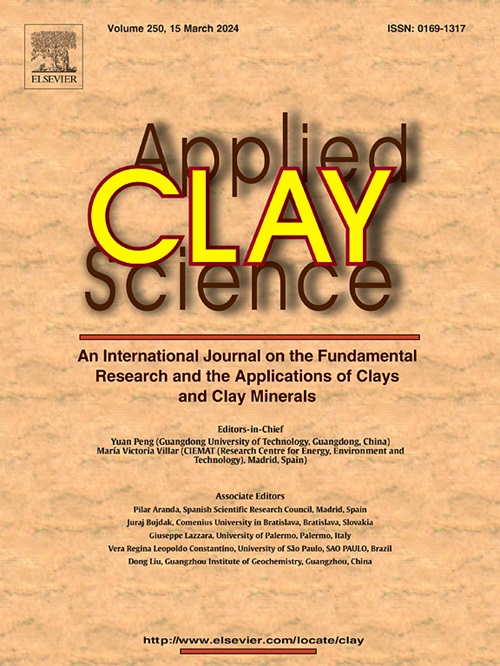Photoinduced cooling effect of water-retentive composite of TiO2 and saponite
IF 5.3
2区 地球科学
Q2 CHEMISTRY, PHYSICAL
引用次数: 0
Abstract
TiO2 coating of a building envelope is expected to contribute to the mitigation of the heat-island effect because of the photoinduced cooling effect. However, the limited water adsorbability and retentivity of the TiO2 thin film can require successive sprinkling of water onto a building to achieve the sufficient cooling effect. In this study, a thin film consisting of a mixture of TiO2 and saponite was prepared through a sol–gel method. The high water retentivity of saponite was found to enhance the photoinduced cooling effect of the TiO2-based thin film. The photoinduced temporal change in the water adsorbability and retentivity of the highly hydrophilic composite was successfully monitored by using a hydrophilic xanthene dye adsorbed onto the coating as a probe. The effect of environmental humidity on the photoinduced cooling effect was also investigated. We found that higher humidity in the surrounding environment triggered stronger photoinduced cooling effects of the composite film. Especially during summer in Japan, when humidity is high, the TiO2–saponite composite film did not require intentional water sprinkling to achieve cooling effects.

求助全文
约1分钟内获得全文
求助全文
来源期刊

Applied Clay Science
地学-矿物学
CiteScore
10.30
自引率
10.70%
发文量
289
审稿时长
39 days
期刊介绍:
Applied Clay Science aims to be an international journal attracting high quality scientific papers on clays and clay minerals, including research papers, reviews, and technical notes. The journal covers typical subjects of Fundamental and Applied Clay Science such as:
• Synthesis and purification
• Structural, crystallographic and mineralogical properties of clays and clay minerals
• Thermal properties of clays and clay minerals
• Physico-chemical properties including i) surface and interface properties; ii) thermodynamic properties; iii) mechanical properties
• Interaction with water, with polar and apolar molecules
• Colloidal properties and rheology
• Adsorption, Intercalation, Ionic exchange
• Genesis and deposits of clay minerals
• Geology and geochemistry of clays
• Modification of clays and clay minerals properties by thermal and physical treatments
• Modification by chemical treatments with organic and inorganic molecules(organoclays, pillared clays)
• Modification by biological microorganisms. etc...
 求助内容:
求助内容: 应助结果提醒方式:
应助结果提醒方式:


